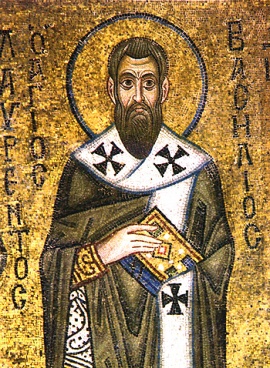
Not too many people can claim the title “the Great” (St. Basil, St. Leo, Wayne Gretzky), but here we are with our second “Great” in a row! St. Gregory the Great was born around 540 of a noble family known for their piety and Christian fidelity. St. Gregory had quite a pedigree going for him – both of his parents were saints and two of his relatives had been popes – Felix III and Agapetus. So I guess you could say that whatever it was that he had ran in the family.
St. Gregory began his career by serving as the Prefect of Rome in 572, and while this sounds nice, it was not a terribly sought-after position at the time – Rome was falling apart! Maybe it was the vastness of the problems lying before him or something deeper, but Gregory eventually abandoned his secular ambitions and, like many Fathers before him, entered the monastic life. Whereas many of his monastic predecessors founded monasteries in the deserts or the wilderness, Gregory established mini-deserts in the middle of the city, including St. Andrew’s Monastery on the Caelian Hill in Rome.
Gregory’s holiness led others to grow in their respect of him, and he was appointed apocrisarius (basically a papal diplomat) to Emperor Tiberius II at Constantinople. His political mission was to acquire the Emperor’s help against the invading Lombard army, but he was also attentive to his spiritual mission: to free the Church from the Monophysite heresy. You remember these guys – the ones who rained on the parade at the Council of Chalcedon. If you recall, St. Cyril of Alexandria said that Christ was two natures (human and divine), but one person. Well, the Monophysites claimed that at Jesus’ birth, the divine nature obliterated the human nature, so Christ was really just one nature (divine). St. Gregory was having none of it, though, and worked to further clarify the Church’s teaching.
Despite his refusals and attempts to flee, Gregory was elected as Pope in 590, and is now known as one of the greatest in history. As Pope, he reformed the clergy to give them a more spiritual basis from which to conduct their ministry. He also emphasized missionary work in the Western Church. In Gregory’s mind, with all these barbarians invading Europe, why not convert them as well? He sent missionaries to Sardinia, Gaul, and England (including St. Augustine of Canterbury). Gregory also worked to reform the liturgy and firm up the order of the Mass as we know it today. Part of his work involved fostering the development of sacred music, especially a little thing you might have heard of – Gregorian chant!
St. Gregory himself chief pastor of souls and peacemaker in the Church. With the cities and territories of the former Roman Empire in shambles, Gregory took it upon himself to protect his people against invading armies, especially the Lombards. St. Gregory even negotiated two different truces to dissuade the Lombards outside of the government’s approval.
St. Gregory the Great was one of the first popes to use the title Servus Servorum Dei, the “Servant of the Servants of God.” As Pope Benedict XVI writes about him, “Precisely because [Gregory] was this, he is Great, and also shows us the measure of true greatness.” May we imitate St. Gregory the Great to aspire to true greatness in our Christian lives as well!